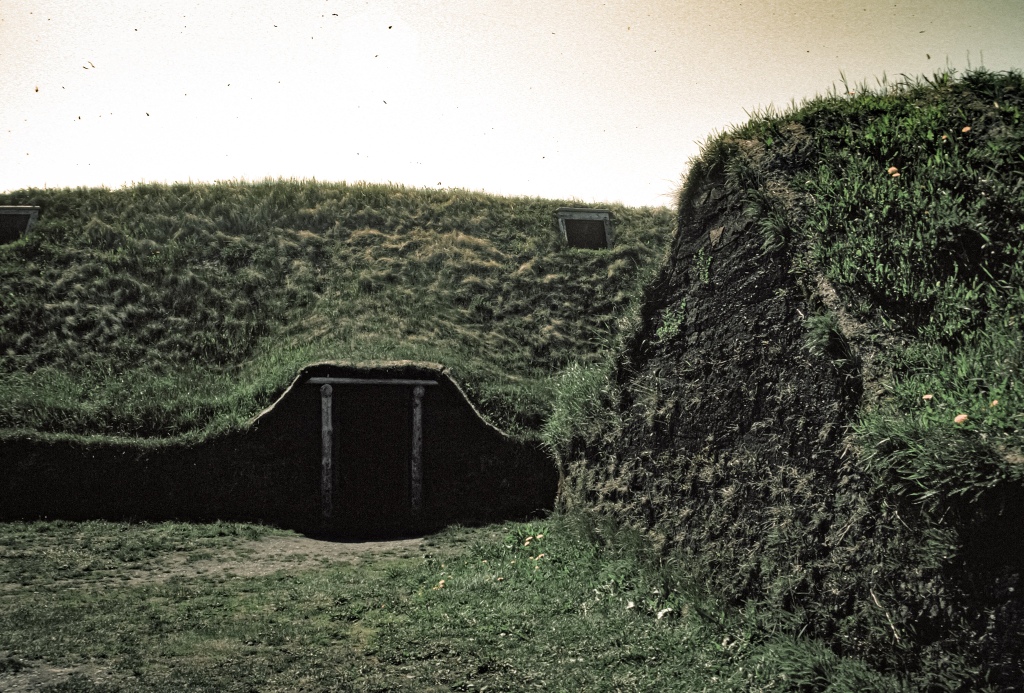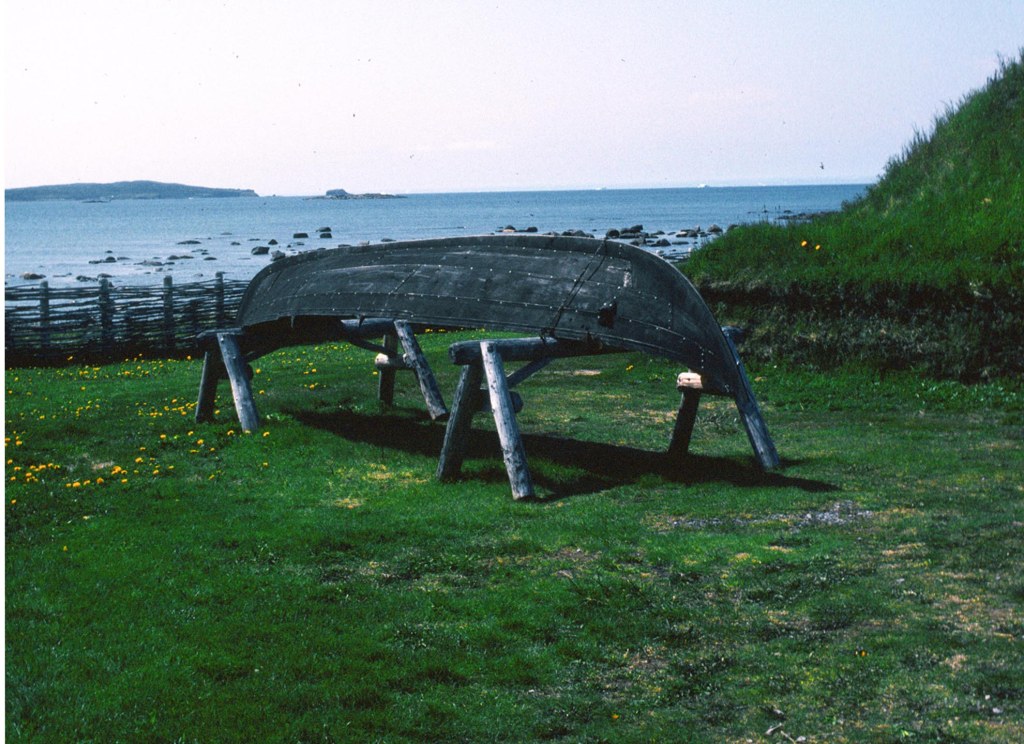The Saga of the Greenlanders and the Saga of Eric the Red had long told of the extraordinary voyages of Norse settlers and adventurers more than 1000 years ago, but until the late 1950s none was found. Then, on a remote northern point of Newfoundland, a local man pointed out to explorer Helge Ingstad and his wife Anne Stine Ingstadt an area locally known as “old Indian campsite”.

From 1961 to 1968 a team lead by Ingstadt conducted archaeological excavations that proved the presence of a Norwegian settlement there, dating from approximately 990 to 1050 AD. The discoveries by Ingstadt and her team had, for the first time, finally located a definite site of Norse settlement. In 1978 L’Anse aux Meadows became the first UNESCO World Heritage Site. While evidence of native settlement is present on the site, it dates from earlier periods.
What the Ingstadt team found on site were rectangular mounds arranged in a pattern that signified human settlement. Careful excavation and attention to detail led them to discover that the mounds were the remains of sod covered wooden buildings. The largest of these was approximately 95 feet long by 51 feet wide, with seven additional structures of smaller and varying sizes.

These buildings left indications to their previous uses as a boat building and repair shop, iron smithing, carpentry shop and structures used for storage, housing, and domestic tasks. Interestingly, no burials were found on the premises, nor were there any signs of agriculture or animal husbandry found on the site.

While the land surrounding the settlement was heavily forested at the time of the Nordic settlement, there is no forestation in the region now. On the northwest coast of Newfoundland, Route 436 travels north along a sparsely populated peninsula on the east side of the Gulf of St Lawrence and is worthy as an experience on its own. Across the Gulf lies sparsely populated Labrador. On the very tip of the peninsula, on Route 436, the L’Anse Aux Meadows Norse settlement overlooks Espaves Bay amid a setting of peat bog, marsh and saltwater grasses.

The place is isolated and there are no other human habitations nearby, its atmosphere is desolate and lonely, with the cold and occasionally iceberg-filled bay bringing a sense of isolation that the original Norse settlers must have experienced. Seven original buildings sites were excavated during the archeological studies, and when completed the sites were carefully covered and restored.

North of the original site reconstructions of some of those original buildings, using the original building techniques and materials, were built and serve as home for some of the historic materials found on the site and to teach visitors about L’Anse Aux Meadows and its settlers.
North of the original site reconstructions of some of those original buildings, using the original building techniques and materials, were built and serve as home for some of the historic materials found on the site and to teach visitors about L’Anse Aux Meadows and its settlers.

Close by L’Anse Aux Meadows, anyone traveling in the area should look for Norstead, a recreation of a Nordic trade port that includes Nordic sod-covered structures as well as the ship “ Snorri” an historically accurate reproduction of a Norse trading vessel of the type used at L’Anse Aux Meadows. Built in Europe in the mid-1990s, it sailed to L’Anse aux Meadows in 1998 in a recreation of the original voyage; it was then given to the museum at Norstead.

Access is by flights to Deer Lake, Newfoundland and rental car to the site, or by travel by car to Sydney, Nova Scotia and Ferry from there to Port au Basques NewFoundland. Lodging and dining are available in close proximity to the L’Anse Aux Meadows and Norstead sites.
Access is by flights to Deer Lake, Newfoundland and rental car to the site, or by travel by car to Sydney, Nova Scotia and Ferry from there to Port au Basques NewFoundland. Lodging and dining are available in close proximity to the L’Anse Aux Meadows and Norstead sites.